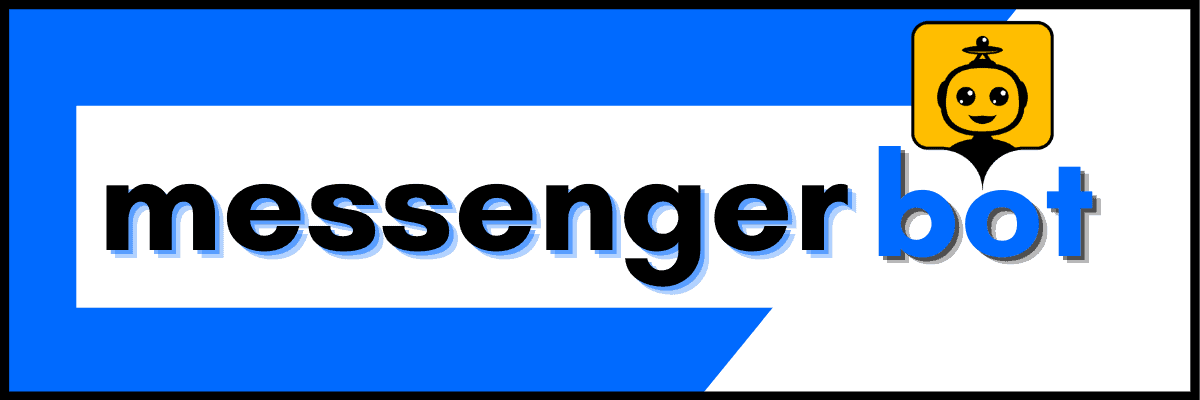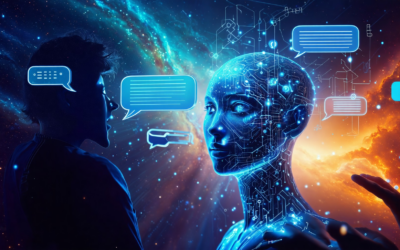In today’s rapidly evolving digital landscape, the emergence of AI talkbots has transformed the way we interact with technology. These sophisticated conversational agents are designed to facilitate seamless communication, making it easier than ever to engage with artificial intelligence. In this comprehensive guide, we will explore the fascinating world of conversational AI and voice technology, addressing key questions such as, “Is there an AI that I can talk to?” and “Is there an AI that can speak?” We will delve into the mechanics of AI talkbots, provide a step-by-step guide on accessing platforms like Google AI Bard, and highlight some of the best free AI chatbots available today. Additionally, we will evaluate the leading AI talkbots on the market, discuss the legal implications of using AI voice technology, and examine the intersection of AI talkbots with other innovative technologies. Join us as we uncover the insights and trends shaping the future of AI communication, ensuring you are well-equipped to navigate this exciting frontier.
Is there an AI that I can talk to?
Understanding AI Talkbots: What They Are and How They Work
AI talkbots are sophisticated digital assistants designed to engage users in conversation, providing responses that mimic human interaction. These chatbots leverage advanced natural language processing (NLP) technologies to understand user inputs and generate relevant replies. By utilizing machine learning algorithms, AI talkbots continuously improve their conversational abilities, making them increasingly effective in various applications, from customer service to personal companionship.
One of the most notable examples of AI talkbots is **Dialogflow by Google**. This platform allows developers to create conversational interfaces for websites and messaging applications, enabling seamless interactions. By understanding user intents, Dialogflow can facilitate engaging conversations that enhance user experience. For more information, visit Dialogflow.
Another prominent player in the AI talkbot space is **ChatGPT by OpenAI**. This state-of-the-art language model excels in generating human-like text, making it suitable for customer support and content creation. ChatGPT can answer questions, engage in discussions, and even generate creative content, showcasing the versatility of AI in communication. Learn more about its capabilities at OpenAI.
The Role of Conversational AI in Modern Communication
Conversational AI plays a pivotal role in enhancing communication across various platforms. By automating interactions, businesses can provide instant responses to customer inquiries, improving overall satisfaction. AI talkbots like **Replika** offer emotional support, while tools like **Jasper Chat** assist in generating marketing content, showcasing the diverse applications of conversational AI.
Moreover, AI chatbots such as **ELSA AI** focus on language learning, providing users with real-time feedback to improve their speaking skills. This demonstrates how conversational AI can be tailored to meet specific user needs, whether for personal development or business efficiency. For more details on ELSA AI, visit ELSA.
In the realm of customer service, **Messenger Bot** is a powerful tool that automates interactions on platforms like Facebook. By answering FAQs and providing product recommendations, Messenger Bots enhance user engagement and streamline communication processes. Explore more about Messenger Bots at Facebook for Developers.

How to Access Google AI Bard
Accessing Google AI Bard is a straightforward process that allows you to engage with one of the most advanced AI talkbots available today. By following these simple steps, you can start interacting with Bard and harness its capabilities for your needs.
Step-by-Step Guide to Accessing Google AI Bard
To access Google AI Bard, follow these steps:
- Visit the Bard Website or App: Navigate to the official Google Bard website or download the Bard app from the Google Play Store or Apple App Store.
- Sign In with Your Google Account: Use your existing Google account credentials to sign in. If you do not have a Google account, you will need to create one to access Bard’s features.
- Interface Overview: After signing in, you will be presented with a user-friendly interface featuring a blank input area where you can enter your queries.
- Input Your Query: Type your question or request in natural language. Bard is designed to understand conversational language, making it easy to interact.
- Submit Your Request: Click on the “Ask” button to submit your query. Bard will process your request and generate a response based on its advanced AI algorithms.
- Explore Additional Features: Depending on updates, Bard may offer integration with other Google services or tools, enhancing your experience. Keep an eye out for features like Messenger Bot integration, which allows for seamless communication across platforms.
For more detailed guidance and updates on using Google AI Bard, refer to the official Google support page Google Bard Help.
Exploring Other Platforms for AI Interaction
While Google AI Bard is a powerful tool, there are several other platforms available for engaging with AI talkbots. These alternatives provide unique functionalities and can cater to different user needs. Some notable options include:
- Brain Pod AI: Known for its versatile AI chat assistant, Brain Pod AI offers features like multilingual support and advanced automation capabilities, making it a strong contender in the AI talkbot space.
- Messenger Bot: This platform specializes in automating interactions across various channels, providing businesses with tools for lead generation and customer engagement.
- Zendesk: A well-known customer service platform that integrates AI chatbots to enhance customer support experiences.
Each of these platforms has its strengths, and exploring them can help you find the best AI talkbot solution tailored to your specific requirements. For a deeper dive into the capabilities of AI chatbots, check out our article on Best AI Chatbots.
Is there a free AI chatbot?
Yes, there are several free AI chatbots available that you can use. These chatbots leverage advanced artificial intelligence to provide engaging and informative interactions. Here are some notable options:
- ChatGPT: Developed by OpenAI, ChatGPT offers a free tier that allows users to interact with the AI for various queries. It is known for its conversational abilities and can provide detailed responses across a wide range of topics.
- Claude by Anthropic: Claude is a free AI chatbot that connects to the internet, providing real-time information and sources. Its user-friendly interface allows users to easily input their questions in the “ask anything” box, making it accessible for everyone.
- Perplexity AI: This chatbot is also free and offers an engaging user experience. It not only answers questions but also provides citations for the information it shares, enhancing its reliability.
- Messenger Bot: Available on platforms like Facebook Messenger, this bot can assist users with various tasks and queries. While it may not be as advanced as some standalone chatbots, it offers convenience for users already on social media.
For more information on these chatbots, you can visit their respective websites or check technology review sites like ZDNET for comparisons and user experiences.
Top Free AI Chatbots Available Today
When considering free AI chatbots, it’s essential to evaluate their features and capabilities. Here’s a closer look at some of the top free AI chatbots available today:
- ChatGPT: Known for its versatility, ChatGPT can assist with everything from casual conversation to complex queries, making it a popular choice among users.
- Claude: With its real-time internet connectivity, Claude stands out for providing up-to-date information, which is particularly useful for users seeking current events or recent data.
- Perplexity AI: This chatbot’s ability to provide citations makes it a reliable source for users who value accuracy and verification in the information they receive.
- Messenger Bot: As a practical tool for social media users, Messenger Bot enhances engagement by automating responses and facilitating communication on platforms like Facebook.
Comparing Free AI Chatbots: Features and Limitations
While free AI chatbots offer valuable services, they also come with certain limitations. Here’s a comparison of their features:
- ChatGPT: Offers extensive conversational capabilities but may have limitations in real-time data access.
- Claude: Provides real-time information but may not have as broad a range of conversational topics as ChatGPT.
- Perplexity AI: Excellent for fact-checking due to its citation feature, but may lack the depth of conversation found in other chatbots.
- Messenger Bot: Great for social media integration but may not be as sophisticated in handling complex queries compared to standalone chatbots.
Ultimately, the choice of a free AI chatbot will depend on your specific needs, whether it’s for casual conversation, real-time information, or social media engagement.
Which AI is Best for Talking?
When considering which AI is best for talking and engaging in conversation, several leading virtual assistant services stand out due to their advanced natural language processing capabilities. Here are some of the top options:
- Amazon Alexa: Known for its extensive skill set, Alexa can perform a variety of tasks, from controlling smart home devices to providing news updates. Its conversational abilities have improved significantly, allowing for more natural interactions. According to a study by Voicebot.ai, Alexa has a market share of over 25% in the smart speaker industry, indicating its popularity and effectiveness in voice interaction.
- Google Assistant: Leveraging Google’s powerful search engine, Google Assistant excels in providing accurate information and context-aware responses. It can engage in two-way conversations and learn from user interactions, making it a highly responsive AI. Research from Gartner highlights that Google Assistant is one of the most widely used voice assistants, with a user-friendly interface that enhances conversational experiences.
- Apple Siri: Siri integrates seamlessly with Apple devices, offering a personalized experience. It can handle a range of tasks, including sending messages and setting reminders, while also improving its conversational skills through machine learning. A report by Statista shows that Siri has a significant user base, particularly among iPhone users, which speaks to its effectiveness in voice interaction.
- Microsoft Cortana: Although it has shifted focus towards enterprise solutions, Cortana still provides conversational capabilities for users within the Microsoft ecosystem. It can assist with scheduling and reminders, making it useful for productivity-focused interactions.
- Messenger Bots: While not traditional voice assistants, Messenger Bots on platforms like Facebook can engage users in text-based conversations. They utilize AI to provide customer support and information, making them a valuable tool for businesses looking to enhance user interaction.
In summary, the best AI for talking depends on your specific needs and the ecosystem you are already using. Each of these options offers unique strengths in conversational AI, making them suitable for different types of interactions. For further reading on the effectiveness of these AIs, you can refer to sources like Voicebot.ai and Gartner.
User Experiences: Reviews of Leading AI Talkbots
User experiences play a crucial role in determining the effectiveness of AI talkbots. Here’s a look at what users are saying about some of the leading AI talkbots:
- Amazon Alexa: Users appreciate Alexa’s ability to integrate with various smart home devices and its extensive skill set. Many find its conversational style engaging, although some report occasional misunderstandings in complex queries.
- Google Assistant: Users often highlight Google Assistant’s accuracy and ability to provide contextual responses. Its learning capability from user interactions is frequently praised, making conversations feel more personalized.
- Apple Siri: Siri users enjoy the seamless integration with Apple devices, noting its convenience for everyday tasks. However, some users express a desire for improved conversational depth and understanding.
- Microsoft Cortana: While its user base has shifted, those still using Cortana appreciate its productivity features, particularly in scheduling and reminders, although it lacks the conversational flair of other assistants.
- Messenger Bots: Businesses utilizing Messenger Bots report positive feedback from customers regarding quick responses and helpful interactions, enhancing overall customer satisfaction.
Ultimately, user reviews indicate that the best AI talkbot for you will depend on your specific needs, whether for personal use or business applications. For more insights on how AI talkbots are revolutionizing customer interactions, check out our article on Best AI Chatbots.

Is There an AI That Can Speak?
The Technology Behind Speaking AI: How It Works
Artificial Intelligence (AI) has made significant advancements in speech synthesis, enabling machines to produce human-like voices. These AI voices are generated through sophisticated machine learning models that analyze extensive datasets of human voice recordings. The models learn to replicate various aspects of human speech, including tone, intonation, pacing, and emotional nuances. This technology is at the core of many AI talkbots, allowing them to engage in natural conversations with users.
The integration of AI talkbots into communication platforms has transformed how businesses interact with customers. By utilizing advanced algorithms, these bots can understand and respond to user inquiries in real-time, providing a seamless conversational experience. The ability to speak not only enhances user engagement but also allows for more personalized interactions, making AI talkbots a valuable asset in customer service and support.
Applications of Speaking AI in Various Industries
AI voices are increasingly utilized across various industries for applications such as:
– **Voiceovers for Videos**: Enhancing multimedia content with engaging narration.
– **E-Learning**: Providing interactive and personalized learning experiences.
– **Virtual Assistants**: Powering conversational agents in customer service and personal assistance.
Popular AI voice solutions include platforms like [Synthesia](https://www.synthesia.io), which offers a diverse range of voice options, and [Voice.ai](https://voice.ai), known for high-quality voices at no cost. Other notable solutions are [ElevenLabs](https://www.elevenlabs.io), focusing on natural speech patterns, and [Speechify](https://speechify.com), which enhances the listening experience with human-like cadence.
Emerging trends in AI speech synthesis indicate a shift towards incorporating emotional intelligence into AI voices, significantly enhancing user engagement and satisfaction. As the technology continues to evolve, we can expect even more innovative applications of speaking AI across various sectors.
Is it illegal to use AI voice?
The legality of using AI voice technology largely depends on the context in which it is employed. Here are key points to consider:
Understanding the Legal Landscape of AI Voice Technology
- Telemarketing Regulations: Under the Telephone Consumer Protection Act (TCPA), the use of artificial or prerecorded voice messages in telemarketing calls is prohibited without prior consent from the recipient. This means that businesses must obtain explicit permission before using AI-generated voices for marketing purposes.
- FCC Rulings: The Federal Communications Commission (FCC) has established regulations that make it illegal to use AI to create robocalls that are misleading or confusing. This includes any automated calls that misrepresent the identity of the caller or the purpose of the call. Violations can lead to significant fines and legal repercussions.
- Consumer Protection: If you believe you have received a misleading robocall, you can report it using the streamlined reporting form available at DoNotCall.gov. Additionally, you can inform the Federal Trade Commission (FTC) about any fraudulent activity at ReportFraud.ftc.gov.
- Ethical Considerations: Beyond legal implications, there are ethical considerations regarding the use of AI voice technology. Companies should ensure transparency and honesty in their communications to maintain consumer trust.
- Potential for Legitimate Use: AI voice technology can be used legitimately in various applications, such as customer service bots or interactive voice response systems, provided they comply with legal standards and do not engage in deceptive practices.
Ethical Considerations in Using AI Voice Tools
While the legal framework provides a foundation for the use of AI voice technology, ethical considerations play a crucial role in its implementation. Companies must prioritize transparency, ensuring that users are aware when they are interacting with AI rather than a human. This practice not only fosters trust but also aligns with consumer expectations in an increasingly automated world.
Moreover, businesses should actively avoid using AI voice technology in ways that could mislead or confuse consumers. For instance, employing AI in customer service should enhance user experience without compromising clarity or honesty. By adhering to both legal and ethical standards, organizations can leverage AI voice technology effectively while maintaining a positive reputation.
Exploring Related Technologies: AI Kanye, AI Video Kanye, ChatGPT, Claude AI, and AI Detectors
As the landscape of artificial intelligence evolves, various technologies are emerging that complement and enhance the capabilities of AI talkbots. This section delves into the intersection of AI talkbots and popular AI technologies, highlighting how they work together to improve user interaction and engagement.
The Intersection of AI Talkbots and Popular AI Technologies
AI talkbots, such as Messenger Bot, are increasingly integrating with other advanced AI technologies to provide a more seamless and engaging user experience. For instance, AI chat assistants are designed to handle complex queries and provide personalized responses, making them an essential tool for businesses looking to enhance customer support. Additionally, technologies like AI Video Kanye leverage AI to create dynamic video content, which can be used in conjunction with chatbots to deliver rich media experiences that captivate users.
Furthermore, tools like ChatGPT and Claude AI are setting new standards in conversational AI, enabling more natural and human-like interactions. These platforms utilize advanced natural language processing (NLP) techniques to understand context and intent, allowing AI talkbots to respond more accurately to user inquiries. By integrating these technologies, businesses can create a more cohesive communication strategy that not only addresses customer needs but also enhances brand loyalty.
Future Trends in AI: What’s Next for Conversational AI and Voice Technology
The future of conversational AI and voice technology is promising, with several trends poised to shape the industry. One significant trend is the increasing adoption of multilingual support in AI talkbots, allowing businesses to reach a broader audience. As seen with platforms like Messenger Bot, the ability to communicate in multiple languages is becoming a standard feature, enhancing user engagement across diverse demographics.
Moreover, the integration of AI detectors is gaining traction, helping businesses monitor and analyze interactions for quality assurance and compliance. This technology ensures that AI talkbots maintain high standards of communication, providing users with accurate and reliable information. As AI continues to advance, we can expect even more innovative features that will redefine how we interact with technology, making AI talkbots an indispensable part of digital communication strategies.




